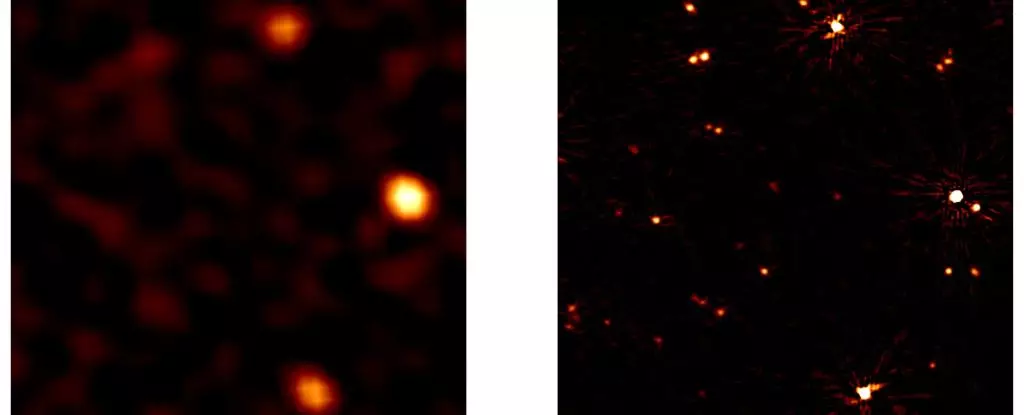Recently, a groundbreaking technique in radio astronomy has allowed astronomers to unveil the lowest frequencies of the radio Universe in unprecedented clarity. Previously, the turbulent interference generated by Earth’s ionosphere posed a significant challenge in observing the radio sky below 30 megahertz. However, a team of astronomers led by Christian Groeneveld from Leiden University in the Netherlands has successfully developed a new calibration method that has provided sharp images of the radio Universe in the elusive frequency range of 16-30 megahertz.
At the lowest end of the electromagnetic spectrum, the radio waves possess the longest wavelengths, allowing them to penetrate Earth’s atmosphere. Nonetheless, detecting these signals presents a unique set of obstacles due to their faintness and the requirement for large antennas. Placing radio telescopes in space is not a cost-effective approach for studying the radio sky, leading to most telescopes being stationed on Earth’s surface. Despite this, observing the decameter frequency range below 30 megahertz with high resolution has been impeded by the scattering effect of the ionosphere, causing radio waves to be highly corrupted upon arrival.
To address the interference caused by the ionosphere, Groeneveld and his team devised a calibration strategy akin to adaptive optics used in optical telescopes. By utilizing the radio sources themselves as calibration targets, the researchers achieved sensitivity and resolution levels ten times higher than previous decameter observations. Although the technique is not flawless and artifacts from the ionospheric influence are still present in the images, the calibration has significantly enhanced the precision in pinpointing radio sources and revealing previously unseen details in the radio Universe.
The breakthrough in observing the low-frequency radio emission opens up a realm of opportunities for astronomers. By studying galaxy clusters and outbursts from distant black holes in the early Universe at these frequencies, scientists can gain valuable insights into the dynamics of these celestial bodies. The new calibration technique provides a powerful tool for understanding black hole accretion processes and exploring previously uncharted territories of the cosmos.
The success of this calibration method has paved the way for further advancements in radio astronomy. Groeneveld and his team are diligently processing more data with the goal of mapping the entire decameter northern sky. The potential for unexpected discoveries looms on the horizon, as the enhanced precision in radio observations may unveil phenomena that have eluded detection thus far. The future of radio astronomy appears promising, with the newfound ability to peer into the deepest depths of the radio Universe and expand our understanding of the cosmos.


Leave a Reply